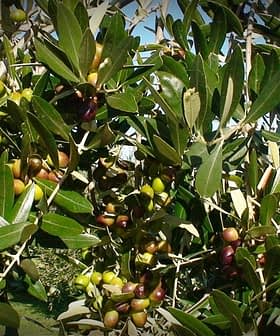By Sarah Schwager
Olive Oil Times Contributor | Reporting from Buenos Aires
A Spanish researcher says he has developed a new way of detecting fatty acids in olive oil.
University of Castilla La Mancha’s (UCLM) School of Chemical Sciences Professor Andrés Moreno discovered that by using magnetic resonance imaging (MRI) he can identify fatty acids and other metabolites present in foods such as olive oil and cheese.
The study, entitled Analysis and reactivity of fatty acids and unsaturated mono‑, di‑, and triglycerides using MRI in cheeses and oils from the Castilla-La Mancha
region, finds that by using this methodology it is possible to characterize and differentiate between varieties of olive oils.
The growing sophistication of counterfeiting and adulteration in the food industry requires a continuous effort to provide techniques capable of ensuring food quality. According to the researchers, MRI allows us to “examine the physical and chemical characteristics of meat, fish, dairy products, vegetables, fruits, juices, cheese, wine and emulsions. Specific properties can be investigated, including alcoholic percentage, ripening fruit, sugar content, ratio of oil and water, ratio of saturated fatty acids / unsaturated and on food adulteration.”
Olive oil is composed mainly of the mixed triglyceride esters of oleic acid and palmitic acid and of other fatty acids, along with traces of squalene (up to 0.7%) and sterols (about 0.2% phytosterol and tocosterols). The composition varies by cultivar, region, altitude, time of harvest, and extraction process.
- Dr. Andres Moreno (3rd from left) and fellow researchers at UCLM
- .
The percentage of fatty acids in olive oils can vary significantly and is very important in determining quality. International Olive Oil Council (IOC) guidelines, for example, say that the acceptable amount of linolenic acid in extra virgin olive oil must be less than 0.8%.
UCLM says “magnetic resonance spectroscopy is a valuable tool that enables the detection, identification and quantification of different types of metabolites present in complex samples such as food in a fast, simple and effective way”.
MRI has been used in fields such as medicine, biochemistry and organic chemistry.
Currently, to determine the fatty acids contained in olive oil requires the use of complex methods such gas chromatography with a flame ionization detector. To ensure the results are precise in this method, careful attention to detail is needed during sample preparation, injection, chromatography and data collection, according to The American Oil Chemists’ Society.
The study also says that MRI provides a wealth of information that allows it to characterize and determine the various levels of maturity of cheeses.
The project, funded in part by the Junta de Comunidades de Castilla-La Mancha, acquired magnetic resonance apparatus valued at 900,000 euros.
Professor Moreno and his research group belong to UCLM’s Regional Institute of Applied Scientific Research.









